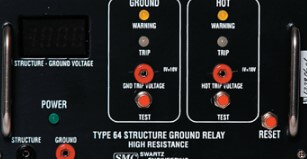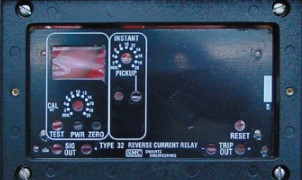Overcurrent relays play a crucial role in safeguarding power systems from potential harm caused by excessive current. These relays come in various types, each tailored to specific overcurrent conditions. In this article, we have explored the different types of overcurrent relays and their applications. Now, let's delve deeper into the importance of selecting the right type of relay for your specific needs and consider some additional factors related to overcurrent protection.

GET IN TOUCH
The ultimate solution for reliable power control! call us at 276-285-3841
Choosing the appropriate overcurrent relay is essential to ensure the effectiveness of the protection system. It involves considering the following factors:
1. System Characteristics: Understanding your electrical system's characteristics, such as voltage levels, load profiles, and fault scenarios, is crucial. Different systems may require different types of overcurrent relays.
2. Coordination: Overcurrent relays need to coordinate with other protective devices in the system. Proper coordination ensures that the relay closest to the fault location operates first, minimizing disruptions and damage.
3. Sensitivity: Depending on the application, you may need to choose a relay with the right sensitivity to detect and respond to overcurrent conditions accurately. High-sensitivity relays are suitable for systems where rapid fault detection is critical.
4. Tolerance to Inrush Currents: Some equipment, like motors and transformers, experience inrush currents during startup. Overcurrent relays should be able to differentiate between these inrush currents and actual fault conditions to prevent unnecessary tripping.
5. Fault Types: Consider the types of faults that your system may encounter, such as short circuits, earth faults, or overloads. Different overcurrent relays are better suited to specific fault types.
6. Time-Delay Settings: Adjustable time-delay settings in certain relays allow you to fine-tune the response time based on your system's needs. This flexibility is valuable for optimizing protection.
7. Maintenance and Testing: Ease of maintenance and testing should also be considered. Regular testing of overcurrent relays is essential to ensure their proper functioning.
8. Future Expansion: Think about the potential for future expansion or changes in your system. Selecting a versatile relay that can adapt to evolving needs can be advantageous.

GET IN TOUCH
The ultimate solution for reliable power control! call us at 276-285-3841
In addition to these considerations, advancements in technology have led to the development of digital overcurrent relays that offer enhanced features, such as communication capabilities for remote monitoring and diagnostics. These modern relays can provide valuable data to improve system reliability and performance.
In addition to the factors mentioned above, there are several other aspects related to overcurrent relays and their importance in power system protection:
- . Inverse Time Characteristics: Overcurrent relays often feature inverse time characteristics, where the time taken to trip decreases as the fault current magnitude increases. Understanding and fine-tuning these characteristics are essential for optimizing protection and minimizing damage.
- . Backup Protection: Overcurrent relays can serve as backup protection in case other protective devices fail. It's crucial to determine their role in the overall protection scheme and ensure they can provide reliable backup when needed.
- . Integration with SCADA Systems: For modern power systems, integrating overcurrent relays with Supervisory Control and Data Acquisition (SCADA) systems allows for real-time monitoring and control. This integration enhances the ability to respond quickly to fault conditions.
- . Cybersecurity: With the increasing connectivity of power systems, cybersecurity has become a significant concern. Ensuring that digital overcurrent relays have robust cybersecurity features is vital to protect against potential cyber threats.
- . Environmental Conditions: Consider the environmental conditions in which the overcurrent relays will operate. Some relays may need additional protection or enclosures if they are exposed to extreme temperatures, humidity, or corrosive atmospheres.
- . Cost and Budget Constraints: While it's essential to select the most suitable overcurrent relay for your needs, budget constraints may also play a role in the decision-making process. Finding a balance between cost and protection capability is crucial.
- . Training and Expertise: Adequate training and expertise are necessary for the proper installation, configuration, and maintenance of overcurrent relays. Ensure that your personnel are well-trained to handle these devices effectively.
- . Compliance with Standards: Overcurrent relays must meet relevant industry standards and regulations to ensure their reliability and safety. Make sure the selected relays comply with the necessary standards applicable in your region.
- . Redundancy: In critical applications, redundancy can be a vital aspect of reliability. Consider whether redundant overcurrent relays or protection schemes are needed to ensure continuous operation in case of failures.
- Record-Keeping and Documentation: Maintain detailed records of overcurrent relay settings, testing results, and maintenance activities. Proper documentation is crucial for troubleshooting, compliance, and historical analysis.
- Relay Testing and Calibration: Regular relay testing and calibration are essential to verify their accuracy and performance. This helps in identifying any potential issues and ensures that the relays respond appropriately to faults.
- Expert Consultation: In complex systems or situations, consulting with experts or manufacturers of overcurrent relays can provide valuable insights and guidance in selecting the most suitable relay types and configurations.
By taking these additional factors into account, you can make a well-informed decision when selecting and implementing overcurrent relays in your power system, thereby enhancing its reliability and protection capabilities.

GET IN TOUCH
Contact Swartz Engineering Today!
In conclusion, the selection of the right overcurrent relay is a critical aspect of electrical system protection. Understanding your system's unique requirements and considering factors like coordination, sensitivity, and fault types will help you make an informed choice. As technology continues to evolve, staying updated on the latest developments in overcurrent relay technology can further enhance the effectiveness of your protection strategy. Swartz Engineering will supply your needs today!
Our Expert Services
Swartz Engineering provides top-quality products to meet our customers' needs. We also make sure our products work reliably and safely. Our products include:
- Type 76 DC Relay
- Type 82 DC Relay
- Swartz Engineering’s Type 64 Ground Relay
- Type 32 Reverse Current Relay
- Type 150 DC
- CSM Shield Monitor
- Metal Oxide Surge Arrestors
- Transducers
- MVIS SL Slim-line Contactor
- Fully-tested Power Control Rooms
- Swartz Engineering’s Portable Substations
CONTACT US
Take the first step towards powering up your operations! call us at 276-285-3841
